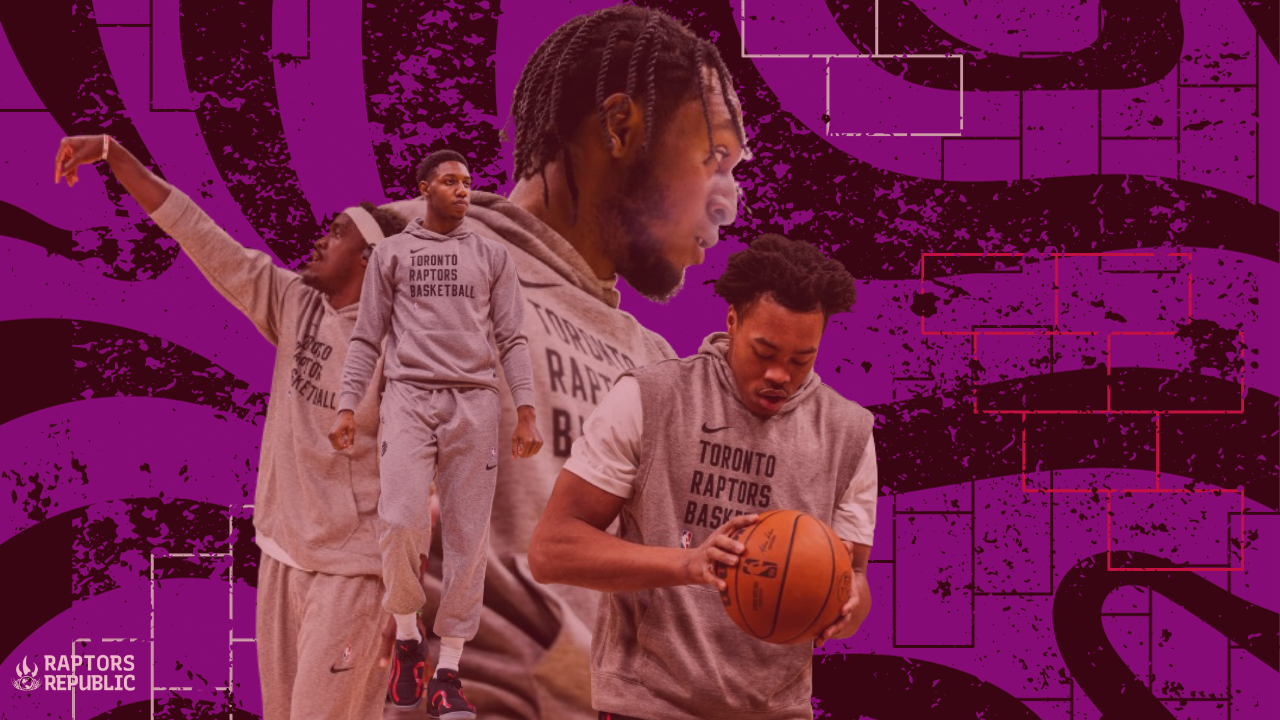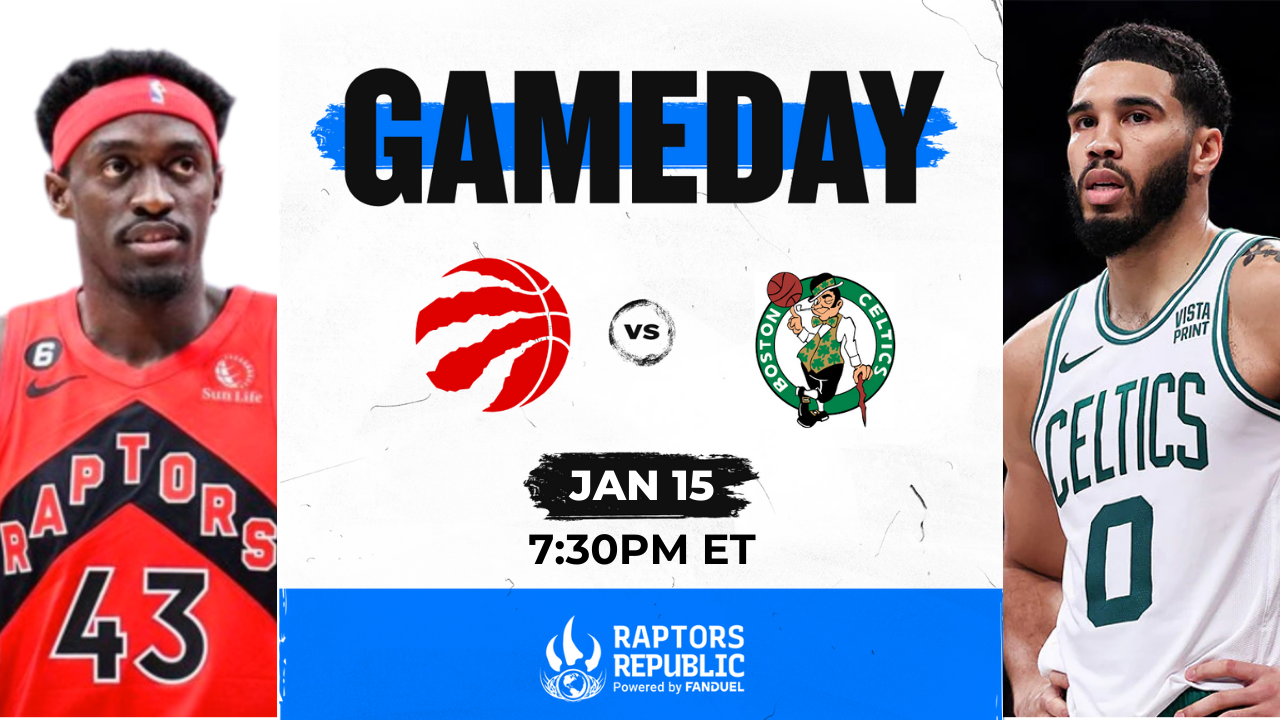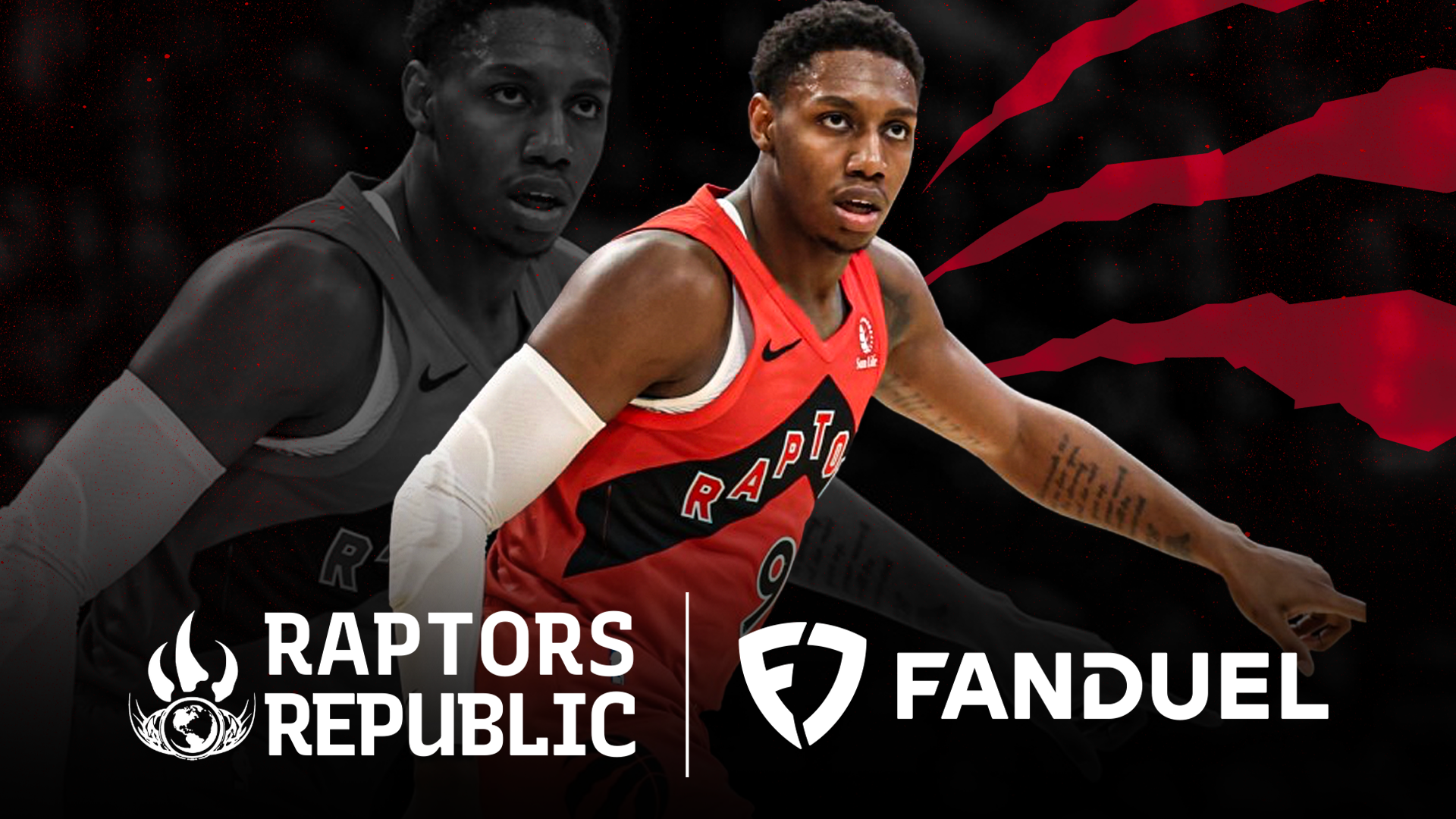Consider this my Third installment [First and Second] of an infinite number of Toronto Raptors trade pieces.
It seems Pascal Siakam won’t be a Toronto Raptor by February 8th. There’s not been a contract extension. The scuttlebutt is rampant.
Still, nothing is to be trusted. We’ve danced this dance too many times before. The adage, the loudest trade rumours are the least true, even more pertinent with the Toronto Raptors.
There’s also one doozy of a reason for Pascal to stay. Toronto can pay him the most money. Pascal has [heavy-handedly] signaled he won’t re-sign for anything less than a four-year maximum – vexing interested teams who must wait for the summer to secure a long-term commitment.
Toronto cannot afford another Freddy-VanVleet-walk-for-nothing debacle. For team management, for public relations, for morale. If Pascal is not traded, he’s re-signed.
Begging the question, with a core of Pascal Siakam, Scottie Barnes, Immanuel Quickley, and RJ Barrett, for the foreseeable future, what should the Toronto Raptors do at the trade deadline?
Background
I’m not the fine details money guy. That’s Offshore Tax Haven alchemists, Blake Murphy, Bobby Marks, and Daniel Hackett. I’ll tell you everything I [Bobby] know though.
2024 Unrestricted Free Agents
- Pascal Siakam ($37.9 Million)
- Gary Trent Jr. ($18.6 Million)
- Thaddeus Young ($8 Million)
- Otto Porter Jr. ($6.3 Million)
- Garrett Temple ($2 Million)
2024 Restricted Free Agents
- Immanuel Quickley ($4.2 Million)
Draft Picks
San Antonio receives the Raptors’ Top-Six protected First Round Draft Pick this year. If Toronto finishes outside the bottom six of the standings, the pick defers to 2025 (protected), then 2026 (protected).
Toronto also has four Second Round Picks available to trade.
The most recent Detroit Pistons’ 2024 Second Round Pick acquired in the Anunoby-trade is of significant value. Second Round Players’ salaries are much more flexible and team friendly (two-way contracts, non-guaranteed, minimum salaries, etc.) making, in some ways, a 31st pick more valuable than a 30th ($6.5 Million for three years).
Salary Cap Situation
Toronto is $1.9 Million below the luxury tax and $4.8 Million below the first apron. The Raptors have a $4.4 Million trade exception.
The Philosophy
We’ve been over this. The evidence is clear both in Masai Ujiri’s transactions – in the past and this year – and the reporting. Toronto is not looking for draft picks, costly contracts, or older players.
There are always exceptions to the rules. Especially, when unique opportunities present itself (the Kawhi Leonard trade the ultimate example). Otherwise, in any trade proposal exercise, Masai think, we must.
First and foremost, the Raptors seek arbitrage. Value where value is neither seen nor leveraged. After that, it’s players who are under team-control (think exchange of Norman Powell, Unrestricted Free Agent, for Gary Trent Jr., Restricted Free Agent – Norm definitely hasn’t forgotten), with high, unmet potential, and who complement Scottie Barnes [and RJ Barrett and Immanuel Quickly] for the longer-term.
The Reality
The Raptors’ future core is a well-advanced work-in-progress. Barnes, Barrett, Quickly – BBQ – are it. For now.
For the sake of this article, Pascal remains – Spicy BBQ – which means, probably, so too does Jakob Pöltl – Spicy TeriJaki BBQ. Though, Pöltl is now, officially, trade eligible. Gradey Dick is not going anywhere; he’s too young and too unproven.
Everyone else is fair game.
Moving Forward
It’s rare for a team to have neither tanking nor contending aspirations. Winning is welcomed; it’s just not necessary. Tanking is useless without a pick; its bad juju too.
Trading to win now is foolhardy, unless it’s incidental to the transaction – such as what has happened with RJ and IQ. Any trade made must be to augment this team for the long-term.
How, can look a number of ways: creating a more flexible contractual situation, establishing a balanced, deeper rotation, or acquiring more proverbial kicks at the stardom can.
What type of player is also up for debate.
Trade Type #1: A Defensive Accompaniment
Over the last month and change, the Raptors identity has transformed. For the first 20 games of the season, the Raptors were 22nd in offensive rating and 15th in defensive rating. For the last 20, they’re 10th and 26th, respectively. An old switcharoo.

Some of that is O.G. out, IQ and RJ in. But, to be fair to the newbies, change has been ongoing for a while. Cause and effect somewhat uncertain.
Morale, no question. The Raptors looked incontrovertibly shell-shocked as losses mounted. Each hollowing their defensive will deeper. Defensive rebounding rate (from 16th to 20th), opponent points per chance on possessions featuring a drive (2nd to 18th), opponent at-rim accuracy (8th to 16th), and opponent turnover rate (16th to 23rd) lesioning the last 20 games. Their half-court-defence tumbling like a Red Bull stratosphere diver from 11th to 27th in points allowed per possession.
Some of the struggle might be bad luck. Raptors opponents are shooting a league-best 41% from three despite Raptors contesting them at an average rate and giving up only two more “open” three pointers per game. In the first 20 games of the season, opponents shot an average 37%, attempts remaining the same.
Some, too, is roster challenges. Jak’s sudden absence, for one. The Raptors 0-3 with the second worst defensive rating since his ankle roll. Incorporating two new young guys in their starting lineup another hiccup.
The greatest concern, however, is the burden placed upon Barnes. Since O.G.’s departure, he’s moved up the defensive hierarchy, matching up with primary creators and points of attack. He’s the best of not great options. It’s exhausted him – Scottie utterly pooched against the Clippers down the stretch last Wednesday.
It’s also removed his off-ball presence. Scottie has become a lethal helpside defender. Accosting unsuspecting drivers like a Tyrant rapaciously taxing its own domain. He’s 16th in blocks and 27th in steals. Moving him on-ball liberates driving lanes.
Trade #1
Dallas Mavericks: Dennis Schröder, Otto Porter Jr., Jalen McDaniels, Two Second Round Picks
Toronto Raptors: Josh Green, Richaun Holmes, [additional salary if Dallas wants to dump]
Why Dallas:
Dallas’ offence has slipped of late. In their last 20 games, they’re 16th in points scored per 100 possessions. Kyrie Irving was out for half those games. The Mavericks offence critically dependent upon he and Luka Dončić. With Luka off the floor, the Mavericks are in the 47th percentile of League scoring; with them both off, it drops to the 4th percentile.
Dennis gives Dallas a third creator. Something they’ve not had in this era nor the Jalen Brunson one. Dennis’ ability to both score and distribute diversifies and deepens Dallas’ top heavy offence. He’s proven in Oklahoma City Thunder and Toronto, he can play alongside two other guards for stretches as well.
Otto Porter Jr. brings shooting and some wing depth. McDaniels a body to replace Josh Green.
Why Toronto
Josh Green is O.G. Anunoby without the corner three. He’s an athletic, rugged defender who struggles to create his own offence – 77% of his makes are assisted. Ideally, that part grows – he’s only 23 on a three-year/$41 Million contract. Toronto needs him for his defence anyway. Green guards both points of attack and primary scoring wings most any night. He with RJ, Scottie, and Pascal, make for a switchable foursome.
Richaun Holmes is a serviceable backup centre.
Why it Won’t Work
Dallas may be loath to depart with their best wing defender or need him to make a bigger splash – like Pascal Siakam.
Trade #2
Minnesota Timberwolves: Dennis Schröder, Jalen McDaniels,
Toronto Raptors: Nickeil Alexander-Walker, Shake Milton, Troy Brown Jr., Second Round Pick
Why Minnesota
With salary cap issues looming and Rudy Gobert and Mike Conley Jr. reaching the denouement of their careers, Minnesota’s championship window is now. They sit atop the Western Conference despite a 20th rated offence – they’re 6-5 in their last eleven.
The Wolves’ weakness is at point guard. After Conley, who’s 36, there’s no one. Dennis gives them reliability and depth. He can start when Conley needs to rest or play next to him and shift Conley into a spot-up shooter (46% on five attempts from three this year).
What fun to reunite twins. Jalen McDaniels and Jaden McDaniels roaming around confusing everyone.
Why Toronto
NAW has finally established himself in the NBA. He’s a dependable perimeter defender shooting 36% on five attempts from three. He’s Canadian, 25, 6’5″, and has another year on his contract at roughly $5 Million/year.
Milton and Brown Jr. make the money work. Neither have worked out in Minnesota; they, like McDaniels, will hope that a new environment engenders new opportunities.
Why it Won’t Work
NAW is integral to Minnesota’s spacing and versatility. Without him, Naz Reid is the next best shooter off the bench; they’d be expecting a lot from an unproven Jalen McDaniels.
Trade Type #2: A Young Shooter
Toronto, miraculously, is shooting well from three. They’re third in the league over the last ten games.
Little hope success will persist. Pascal Siakam is abnormally on fire after being putridly cold. Scottie B from 3 has begun to waver. RJ Barrett, too, is wildly inconsistent. Gary Trent Jr. is only recently breaking out of a slump. Immanuel Quickley remains the only sure thing. A plunge to mediocrity inevitable.
Either way, you can never have too many young, cheap, reliable shooters on a team.
Trade #1
Los Angeles Clippers: Chris Boucher
Toronto Raptors: P.J. Tucker, Amir Coffey, Second Round Pick
Why Los Angeles
The Clippers are full-on championship mode. They’ve vaulted up the Western Conference standings as James Harden’s adapted to his new team. They’re deep nearly everywhere. Guards, wings, bigs.
If there is somewhere to nitpick, it’s at the four. Boucher gives them hustle and grit. He alongside Westbrook will muck second units up. He can provide some spacing and pair with Daniel Theis or Mason Plumlee decently. Should the Clippers slip into their small-ball comfort, Boucher can function as a lone big for limited minutes. Boucher has virtually the same salary structure as P.J. The Clippers have nothing to lose trading a player logging DNPs every night.
Why Toronto
There may be a bigger market for Boucher. Little birdies suggest Boston is sniffing around.
If not, Amir Coffey is a nice addition. He’s a 26 year-old, 6’7″ wing shooting 37% from three for his career, with another year, at $4 million, remaining on his contract. Coffey fits snugly alongside Scottie or Pascal at the three or four. He spaces the floor and has some pop attacking closeouts. His growth has been constricted by the Clippers plethora of wings. He seems ready for a larger offensive role.
A third stint with Toronto for P.J. could be short or long-lived. A contender could come knocking – via buyout or trade. If not, the Raptors would welcome his veteran presence. You want to talk “dogs“. He’s Beethoven.
Why it Won’t Work
The Clippers have little to trade. They will make a splash and need every peripheral part of their team to do that. Coffey has played well for them and is cheap, no sense letting him go unless it’s a major upgrade.
Trade #2
Golden State Warriors: Gary Trent Jr. and Otto Porter Jr.
Toronto Raptors: Andrew Wiggins and Moses Moody
Why Golden State
Something will happen in San Francisco. Possibly, a major trade. Possibly, multiple lesser ones. If the latter, this could be one of them. Golden State gets off Wiggins’ new, bulky contract and adds shooters and depth. Gary’s new contract much more reasonable than Wigs. Otto Porter Jr. is reunited with his championship chums and might stick around for a veteran minimum.
Why Toronto
Moses Moody is, precisely, the player for the new-look Raptors. He’s 21, long, smart for his limited NBA experience, adaptable at wing, defensively sound, reliable from three, and, conveniently, Scottie’s former high school teammate. He also prolongs the Norman Powell-Gary Trent Jr.-RFA negotiation another year.
Andrew Wiggins is another Canadian “toxic asset”. Perhaps home cooking [or Osmow’s] will do him right and rehabilitate his value.
Why it Won’t Work
Moses Moody would be the second lottery draft pick “failure” for the Warriors. Letting him go for two expiring contracts might be too much for the franchise ego to bear. Alternatively, Moody might not be enough for Wiggins’ contract given Barrett and Siakam’s salaries, and Quickley, Barnes, and Moody’s upcoming contract extensions.
Trade Type #3: Youthful Size
The Raptors are much too small. Jak’s recent absence demonstrable. Anthony Davis and Ivica Zubac’s all-access passes at the rim and the team’s wretched defensive rebounding rate in the last three games perfect examples.
Christian Koloko is supposed to be Jak’s backup; he’s been sidelined all year with a respiratory illness. The mysteriousness of his diagnosis and prognosis puts him closer to career-ending than day-to-day on the injury spectrum.
Precious Achiuwa is in New York. Jontay Porter has been a nice find, he’s limited in size and athleticism. The next biggest Raptor is Scottie. He’s further from the rim than he should be. The experiment with him as the lone big too much to ask of him.
Trade #1
Orlando Magic: Gary Trent Jr., Christian Koloko and Two Second Round Picks
Toronto Raptors: Wendell Carter Jr., Chuma Okeke
Why Orlando
Orlando is desperate for shooting. Someone, anyone, to space the floor for Franz Wagner and Paolo Banchero. Only Jalen Suggs shoots both three or more attempts and over 35% from three. Gary is shooting 40% on six attempts a game.
Orlando has a glut at centre. They surged while Wendell was injured; Goga Bitadze flourishing in his stead.
Why Toronto
Wendell provides both size (6’10”, 270lbs) and versatility (41% from three on 2.5 attempts) for Toronto. An ideal fit either at the four, with Pöltl, or the five, with Scottie and Pascal. Carter is still only 24 and under contract until 2026 (four-years/$50 million). Should Toronto choose to move on from both Pöltl and Pascal, Scottie and Carter Jr. would be an intriguing starting 4/5 combination.
Chuma Okeke has not been healthy nor demonstrated he’s ready to be an NBA forward.
Why it Won’t Work
For all the reasons why Wendell works with Toronto’s two skilled forwards, Orlando may feel the same with theirs. Particularly, as the NBA gets bigger, cheap, young, modern centres are all the more valuable. Negotiations might come down to draft capital.



